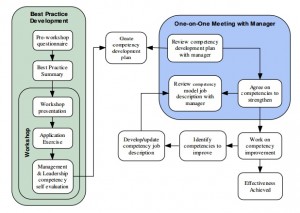We at LeadershipOne have a fascinating window into how various businesses manage change. As you probably know, our firm specializes in assisting businesses with their transition issues; read as change. We have identified seven of the key transition issues, which my partner, Kurt Glassman, and I described in our book, The Tripping Points. (By the way, if you have not received your copy, email me and I will send you one.) The experiences and insights we have gained from observing how various companies handle their transitions are most informative.
We find that as businesses mature, they begin to adapt some of the best practices usually found in larger, more mature organizations. This adaptation process is prompted by several stimuli, but usually at the heart is “business improvement.” In a rapidly changing environment that enables survival at a minimum, but hopefully, continuous improvement in the form of revenue and profitability. In this article I want to focus on one of these areas – management development.
It is interesting to see organizations go through developmental life-cycles. We embrace and mentor/coach the Adizes Lifecycle Model (email me for a copy) that identifies and explains these four stages on the way to Prime: Infancy, Go-Go, Adolescence, and Prime. Prime is where businesses want to go; that’s when you have both flexibility and controllability. Management results are predictably positive.
Management development is a significant contributor to navigating to Prime. There are definite management knowledge and skills needed to get there. So, we see a range of management development processes, some that fall a bit short of being effective and some that are very effective. The difference? Glad you asked. The difference is in the follow-on.
A great book that a number of our clients have read recently is What Got You Here Won’t Get You There by Marshall Goldsmith. In his book Goldsmith makes a very significant observation that positive change does not happen without a follow-on focus. In other words, most people do not change just because they read the book, article or memo. There has to be a little more “intention” involved. And, that applies to company sponsored management development as well.
By the way, we differentiate development from training. Development focuses on broad knowledge and insights that may be required for adaptation to organizational demands in the future. Training focuses on specific job knowledge and skill that is to be applied in the short run, such as a course on Excel spreadsheets. We focus mostly on helping develop long term management and leadership knowledge and skills, based on best practices.
The typical management development scenario in most companies is to send the “learners” to the management development event and hope it gets applied. The reality is a very small fraction of training or development results in performance improvement. Unless, that is, there is some form of follow-on to support adaptation and change. This applies to both training and development. Following is a graphic from some material we developed recently to explain the implementation loop for effective management development. Notice the follow-on event.

The value of management development is solidified in the follow-on meeting with the learner’s manager. The manager, as part of his people development responsibility, can incorporate into the meeting with his direct-report a review of what was learned and how it is being applied. He can coach him. He can add to the learning experience. Then, the management development starts to have real value. That’s when it really works.
Hal Johnson has been CEO of eight companies and has authored three books on business performance. He is Chairman of LeadershipOne, a transition consulting firm. He may be reached at (916) 391-3042 or at [email protected].
